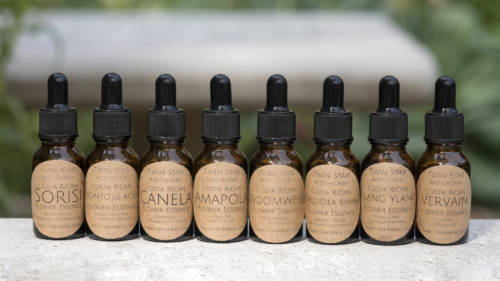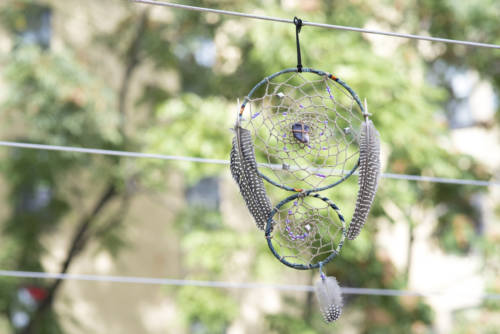
Arvolyn Hill’s Flower Essences Wed Healing with Activism
In Search of a Greener New York is an ongoing Garden Collage series of explorations about sustainability efforts in New York City and beyond– including the people, places, and ideas that are making Manhattan a healthier, happier place to live. In this column, we spotlight individuals who are making New York a “greener” place in an attempt to discover how, exactly, they are doing it. This week, GC spotlights Arvolyn Hill, a flower essence practitioner whose work blends healing with activism.
On a cool autumn morning earlier this September, GC met up with flower essence practitioner Arvolyn Hill at the Robert Clinkscales Community Garden on 146th Street in upper Manhattan. Unlike herbal tinctures and essential oils, flower essences address mental, emotional, and spiritual ills rather than physical ailments, and are considered the most gentle form of herbal healing. Like the medicine she practices, Hill has a reassuring presence, she’s friendly, open, and sincere– but not to be underestimated, either. Flower essences have long had an “out there” reputation as well as plenty of skeptics to their name, and only in recent years have they begun to gain more mainstream traction.
As if evidence of her flower essences’ ability to heal and offset what is negative, Hill seems to be one of those truly good people, leading a fulfilling, meaningful life. (She also DJs and teaches DJing and gardening for the non-profit Girls Inc.) But where Hill distinguishes her flower essence practice is by taking a broader perspective, addressing not just the maladies of the individual but also the lingering effects of ancestral trauma, particularly among historically marginalized groups.
“I believe that trauma gets passed down and we hold that in the body,” Hill explained of her approach. “Since flower essences are such a deep mental healing, that’s the work that I want to do. Especially helping black people and indigenous people who are experiencing trauma from their ancestors– as well as trauma that’s happening today.”
“I believe that trauma gets passed down and we hold that in the body,” Hill explained of her approach. “Since flower essences are such a deep mental healing, that’s the work that I want to do.”
There are a few herbs in particular that Hill draws on for this work: “Ylang ylang is known for helping strengthen your connection with your ancestors. I think a lot of black people don’t know who their ancestors are or where they came from, so there’s that. Also forget-me-nots– that’s another big one. In terms of trauma, bleeding hearts for any type of loss.”
In connection to her own twin heritages, Arvolyn also creates dreamcatchers, a traditional Native American craft, using African materials. “My ancestors are Cherokee as well as black and African American,” Hill explained. “I started off making hula hoops with African fabric and people were instantly like, ‘Oh, can you make me one?’ It kind of just moved from there.” (In an unplanned but exemplary moment, a woman stopped Hill on her way out of the interview to ask where she’d gotten her dreamcatcher, and to take down her information so that she could buy one for herself.) “I definitely try to use just as many black materials as I do Native American because I think the two cultures don’t get put together a lot, even though they are so similar in experiencing oppression.
“For the past two weeks, I just started a challenge where– for every dream catcher sold– 10% of the proceeds go the Standing Rock Legal Fund for the Dakota Access pipeline, and another 10% goes to the Flint Water Fund,” Hill mentioned as the interview came to a close. “They both connect with clean water, so it seemed like two initiatives that work really well together. So far people have been responding really well. Right now we’re at the point of the biggest Native American indigenous conflict to ever happen in this country– and people forget, Flint still doesn’t have clean water.” With modesty, Hill added, “I can’t help with everything, but if I can do my part in some way, I’m happy to do it.”



































